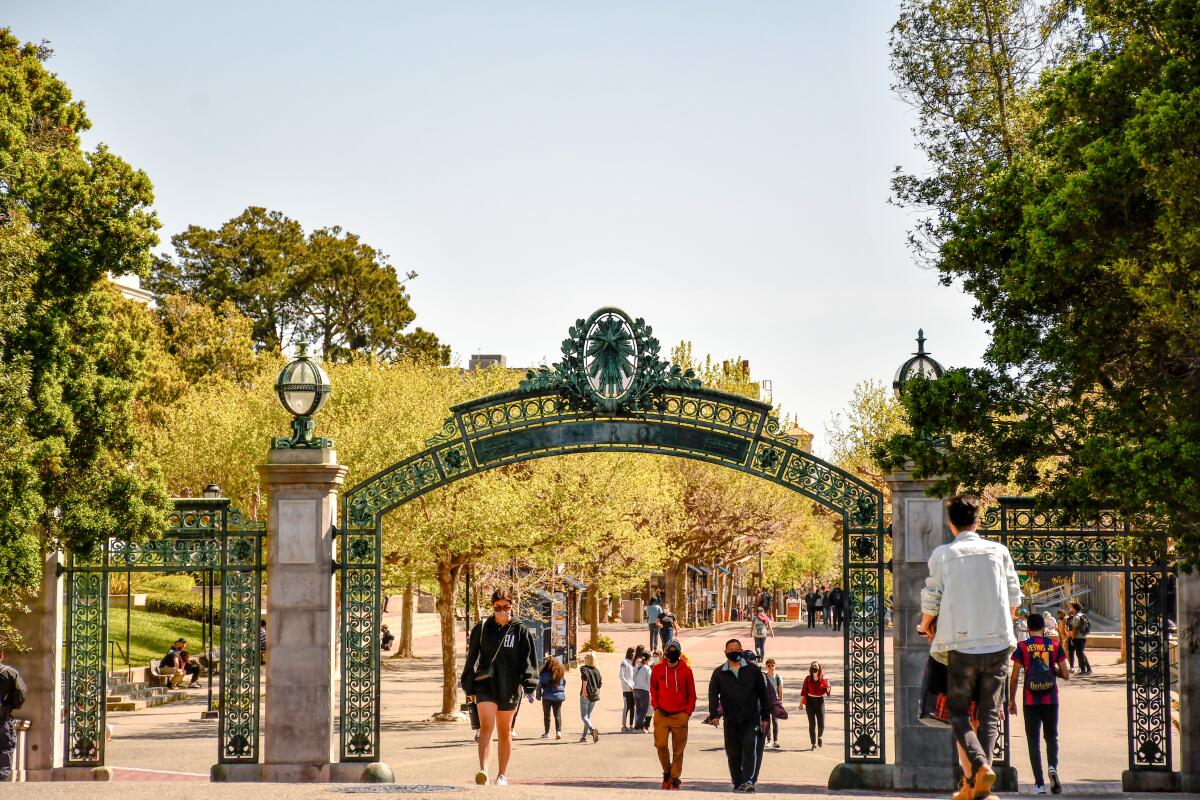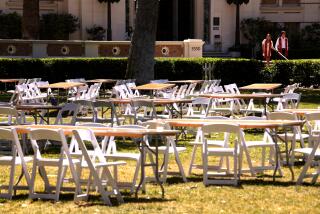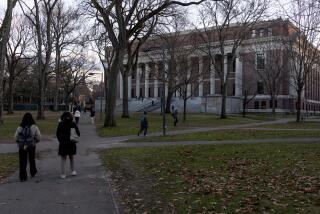Op-Ed: Can universities defy rising nationalism around the world?

The cosmopolitan values of higher education are in retreat before a rising wave of provincialism. International student enrollment at universities in the United States continues to decline, while branch campuses of American universities abroad are being reorganized or shut down. This trend has ominous implications — and not only for education and research.
Universities stand at the intersection of national interest and universal goals. While they play a role in nation-building, they also promote the pursuit of truth, which has historically benefited from the free exchange of ideas and the free movement of scholars and students across borders. In an era of dwindling global institutions, the university is the latest to experience a decline in power and influence. The open flow of ideas is now at risk. Can that be changed?
Universities rose to prominence in the 19th century by making themselves useful to nation-states, training members of the civil service and improving technology through basic research. Later, they became a forum for global collaboration, finding ways to balance their obligations to their home countries and their responsibilities to the international community. But in recent years, fears about the rise of China and suspicion of espionage have tipped the scale toward national priorities.
In 2020, President Trump issued an order banning Chinese graduate students and researchers in a number of scientific fields. President Biden’s administration has maintained the ban. This year, Sen. Tom Cotton (R-Ark.) proposed a prohibition on funding from Chinese entities to U.S. universities and the end of the 10-year multiple-entry visa program for Chinese citizens.
American nationalists like Cotton rarely acknowledge that the Chinese are following a path laid by U.S. students. In the 19th century, nearly 10,000 Americans traveled to study at universities in Germany. When they returned, they established institutions modeled on the ones they found abroad. The Americans’ adaptations of the German universities were so effective that by 1900, the flow of traffic reversed. Germans attended the World’s Fairs in Chicago and St. Louis to learn about American developments in higher education, such as coeducation and applied mathematics. Research and innovation in the natural sciences and the humanities expanded as a result of this “competitive emulation.”
Despite some German concerns that American students might steal trade secrets, intellectual curiosity overcame protectionism. Scientists and scholars from the two countries became partners as well as competitors. Professors traveled back and forth between New York and Berlin on exchanges, sharing and advancing ideas. One Prussian education leader marveled that this mutual learning “represents progress … in the direction of the intellectual unity of the human race.”
The two world wars undermined academic cooperation. The university was pulled toward the state, and faculty members promoted themselves as experts who could advance national goals.
After World War II, it took numerous efforts to revive the dormant values of transatlantic scientific exchange and transparency. Even the international programs of the Cold War era, such as the Ford Foundation-funded Free University of Berlin, the Fulbright Program and the German Academic Exchange Service, were more expressions of “soft power” than true scientific partnerships.
In recent years, universities have brought back cooperation to tackle 21st century problems. Scholars at UC Berkeley, UC Davis, Berlin and the Institute for European Studies in Brussels are sharing research on decarbonization and the electrification of transportation. Their work is leading to green innovation on both sides of the Atlantic.
But U.S. universities today are pulled in divergent directions. The majority of their research funding comes from the federal government, but they generally support the global sharing of ideas, even with U.S. competitors. That’s how knowledge advances. Rather than blocking potential research partners from acquiring visas, governments should be encouraging international scientific collaboration through financial support and exchange programs. The Biden administration should take this opportunity to promote the value of science as a public good.
In the long history of scientific discovery, the recent trend toward nativism is an aberration. Scientific advances and technological innovation require free exchange. Those who want to participate in the scientific enterprise must be willing to open their borders to partners from elsewhere, including potential rivals.
Many have asked whether China can become a scientific superpower despite its regressive politics and limited freedoms. But we should also be asking a different question: Can U.S. universities remain the best in the world despite closing themselves off from China and the rest of the global community?
To remain vital and relevant — and support both national and global progress — universities must remain open to the world. Americans should know this as well as anyone.
Emily J. Levine, associate professor of education and history at Stanford University, is the author, most recently, of “Allies and Rivals: German-American Exchange and the Rise of the Modern Research University.”
More to Read
A cure for the common opinion
Get thought-provoking perspectives with our weekly newsletter.
You may occasionally receive promotional content from the Los Angeles Times.










